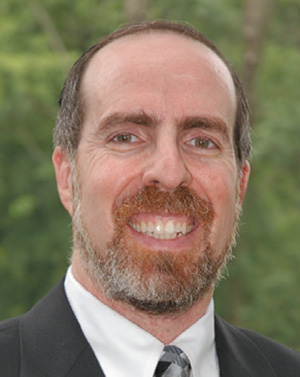
The Gemara in Shabbat states that the mitzvah of lighting Chanukah candles can be fulfilled on three levels: the basic mitzvah is to light one candle per household, the mehadrin (those who seek to fulfill the mitzvah on a higher level) light one candle per family member, and the mehadrin min hamehadrin (those who seek to fulfill the mitzvah on an even higher level) light one candle on the first night, two on the second, etc. Our practice is for everyone to follow the mehadrin min hamehadrin level under ordinary conditions.
There is a well-known debate among the Rishonim as to the way to fulfill the highest level of Chanukah lighting. According to Tosafot, the mehadrin min hamehadrin add one candle per night, but must light only one chanukiah per household. Tosafot explain that lighting more than one menorah per household would make it difficult for onlookers to determine how many candles are being lit for that day.
However, according to the Rambam, one would light one menorah per household member and add a candle to each menorah every night (i.e., if there are 10 members in the household, 10 candles would be lit in total on the first night, 20 the following night, etc.) as this higher level is obviously adding on to the level before it, in which a candle is lit for each member of the household.
The Bet Yosef cites this debate and writes that the custom is to follow Tosafot and light only one chanukiah per household, adding a candle every night. This is how Maran rules in Shulchan Aruch, while the Rama (in a variation on the Rambam) rules that each member of the household should light their own menorah.
The Taz famously notes that this is a rare instance in which the Sephardim follow Tosafot, while the Ashkenazim follow the Rama’s variation of the Rambam. Indeed, the practice of lighting only one Chanukah lamp has resonated deeply with Sephardic Jews and has become an iconic hallmark in Sephardic families. Interestingly, Yemenite Jews also follow the ruling of Maran despite the strong inclination of Yemenite Jews to follow the rulings of the Rambam. Teachers should be sensitive to Sephardic and Yemenite students and be alert to this difference in practice between Mizrachi and Ashkenazi Jews.
Hacham Ovadia applies the Sephardic practice even to out-of-town yeshiva or university students who reside in an apartment or dormitory. Hacham Ovadia writes that they should not light, as they should rely on their parents’ lighting, and reciting a bracha in such an instance would be a bracha levatala (a blessing uttered in vain). He insists that Sephardic students do not enjoy the option to “opt out” of their parents’ lighting and recite a bracha.
By contrast, the great Moroccan authority Rav Shalom Massas disagrees, and permits those in such a situation to opt out of their parents’ lighting and recite a bracha on their own lighting. Moroccan Jews are encouraged to follow the ruling of Ribi Shalom (as Sephardim fondly refer to Rav Messas). Students might not feel like they are experiencing Chanukah if they do not light their own lamp in such circumstances. Although Sephardic Jews are accustomed to relying on their parents’ lighting, they do not feel a part of their parents’ lighting if they are living at a distance (videoconferencing their parents’ lighting might alleviate this concern).
I recommend to Sephardic students who live in an out-of-town dormitory (and are not of Moroccan descent) to light their own Chanukah lights but omit the bracha out of respect to Hacham Ovadia. Sephardic Jews are accustomed to performing mitzvot and omitting the bracha, such as in the case of the recitation of Hallel on Rosh Chodesh.
There is one scenario in which Hacham Ovadia permits students to recite a bracha on their own lighting. Students who live in a time zone to the east of their parents may recite a bracha if their parents have definitely not yet kindled Chanukah lights. For example, American youngsters learning in an Israeli yeshiva may light their own Chanukah lights and recite a bracha. In such a case, even Hacham Ovadia permits a child to opt out of his parents’ lighting and recite a bracha.
By Rabbi Haim Jachter
Rabbi Haim Jachter is the rabbi of Congregation Shaarei Orah, the Sephardic Congregation of Teaneck. He also serves as a rebbe at TABC and a dayan on the Beth Din of Elizabeth.









